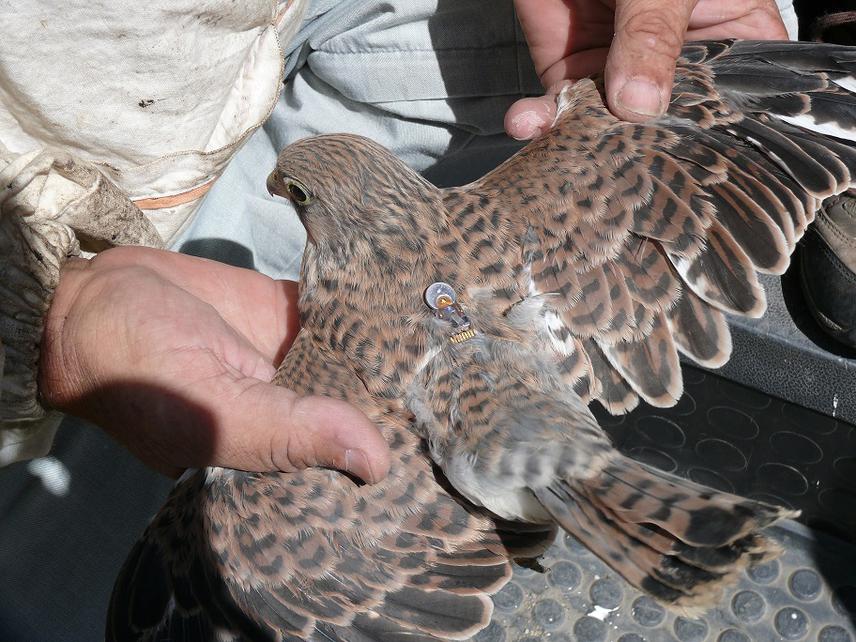Tsovinar Hovhannisyan
The aim is to study wintering grounds of the Armenian population of Lesser Kestrel and understand the potential threats and limiting factors that cause instability in their population numbers; also study the types of habitats preferred by the species inside Armenia during the non-breeding season.
Lesser Kestrel (Falco naumanni) is a small falcon breeding in the South of Armenia near village of Gorayk, which is an Important Bird Area (IBA). The species was down listed from IUCN Red List in 2010 due to rapid increase in its breeding range across Central Europe. Though the situation with the species is still not stable in the Caucasus eco-region and it is listed as Vulnerable (=vulnerable, considered to be facing a high risk of extinction in the wild) in the Red Data Book of Armenia.

Lesser Kestrel juv. tagged with geolocator.
Since 2008 Armenian Society for the Protection of Birds (ASPB) has worked to secure the breeding and the reproductive success of the species in the southern part of the country by installing artificial breeding facility (artificial tower with nest boxes installed inside), ringing exercise and monitoring of the species.
These actions have made it possible to record a slight increase in the population numbers; however data on their in-country movement patterns, migration routes and limiting key factors the species is facing outside of its breeding range are still not studied. The project aims to study wintering grounds of the Armenian population of Lesser kestrels, the potential threats and limiting factors in those sites using satellite telemetry. Additionally the satellite tracking will allow us to study nesting sites of Lesser kestrels if their natal area is outside of Armenia, their in-country movement patterns, nocturnal feeding and roosting places of adult birds in their pre-dispersal period.
Based on the proposed actions our expected outcomes are:
1. Information on migration routes and wintering grounds of Armenian Lesser Kestrel
2. Information on potential limiting factors outside of their breeding site and required actions will be taken
3. The known site/s where the individuals return to breed apart from their breeding ground in South of Armenia.
All this information will allow us to plan a reproduction project for the species and work to expand breeding ranges of Armenian Lesser kestrel within the country. Thanks to these actions hopefully it will be possible to down-list the species from the national red book and have it as a common species as it is in different countries in Europe.